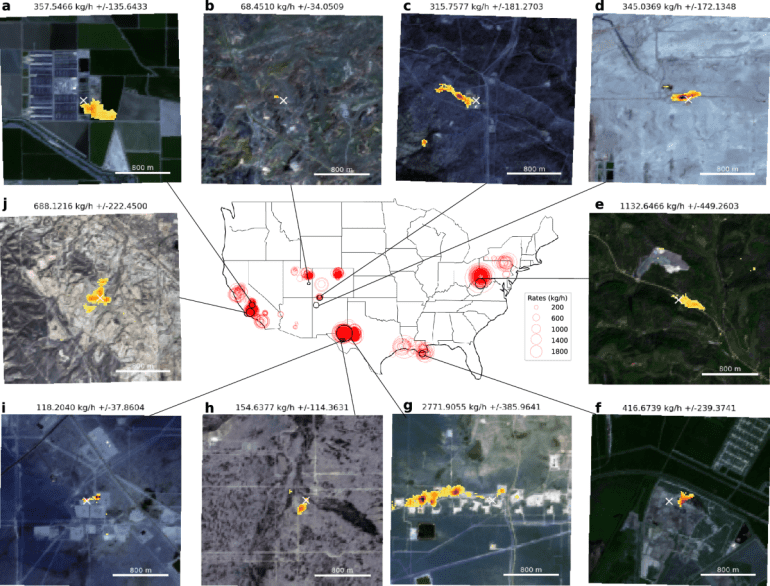- Methane emissions pose a significant threat to global warming, prompting urgent action.
- Geolabe introduces AI-driven solution for high-resolution methane detection using Sentinel-2 satellite data.
- Their method achieves unprecedented spatial and temporal precision globally.
- Detection rate surpasses 85% for methane from oil and gas basins like Permian Basin.
- Technology promises reliable, cost-effective monitoring of methane emissions worldwide.
Main AI News:
The urgency to tackle methane emissions has never been more palpable. Responsible for a significant portion of global warming, methane’s potency in trapping heat surpasses that of CO2 by miles. Hence, reining in methane emissions emerges as a paramount strategy to combat the escalating threat of climate change. Consequently, we witness a surge in corporate pledges and governmental regulations aimed at curbing methane emissions, exemplified by the recent fines imposed by the US Environmental Protection Agency.
Yet, the challenge persists: how do we detect methane emissions at scale effectively? Presently, energy conglomerates and regulatory bodies grapple with imperfect data, rendering their remedial efforts less efficient. While local sensors and those affixed to vehicles or aircraft offer some insight, their coverage remains limited. Moreover, current satellite-based detections, though available, suffer from either inadequate detection capabilities or insufficient coverage.
Enter Geolabe, a research powerhouse headquartered in Los Alamos, New Mexico. In a groundbreaking study published in Nature Communications, their team unveils a pioneering solution: an AI-driven methodology capable of autonomously detecting methane emissions with unprecedented spatial and temporal precision on a global scale. Leveraging the data deluge from the Sentinel-2 satellite constellation, their AI algorithm adeptly sifts through vast datasets, pinpointing methane signatures with remarkable accuracy. Remarkably, their approach boasts an impressive 85% detection rate for methane emanating from oil and gas basins, such as the prolific Permian Basin, while also discerning the precise origins of individual leaks and emissions.
Bertrand Rouet-Leduc, the lead author of the research, underscores the significance of their technology, hailing it as the first of its kind to automate emissions detection with exceptional spatial resolution, covering every corner of the globe, and updating findings every few days. “Automation is indispensable when analyzing expansive territories,” he emphasizes, “and our enhancements in detection thresholds are game-changing.”
Notably, their AI algorithm transcends prior detection methods, surpassing the capabilities of aerial surveys and dedicated satellite observations. Claudia Hulbert, another luminary behind the study, echoes this sentiment, emphasizing the unprecedented level of accuracy and detection thresholds achieved.
Their groundbreaking technology not only promises a reliable means to discern the intricate spatial distribution of methane emissions but also offers insights into their historical evolution. As we confront the daunting challenge of climate change, Geolabe’s innovation stands as a beacon of hope, heralding a new era in methane emissions monitoring.
Conclusion:
Geolabe’s breakthrough in automated methane detection signifies a pivotal moment for the market. With their AI-driven solution offering unparalleled accuracy and global coverage, industries and regulatory bodies stand to benefit from more effective monitoring and mitigation strategies. This innovation not only addresses environmental concerns but also opens up opportunities for new ventures in emissions monitoring and climate action.

